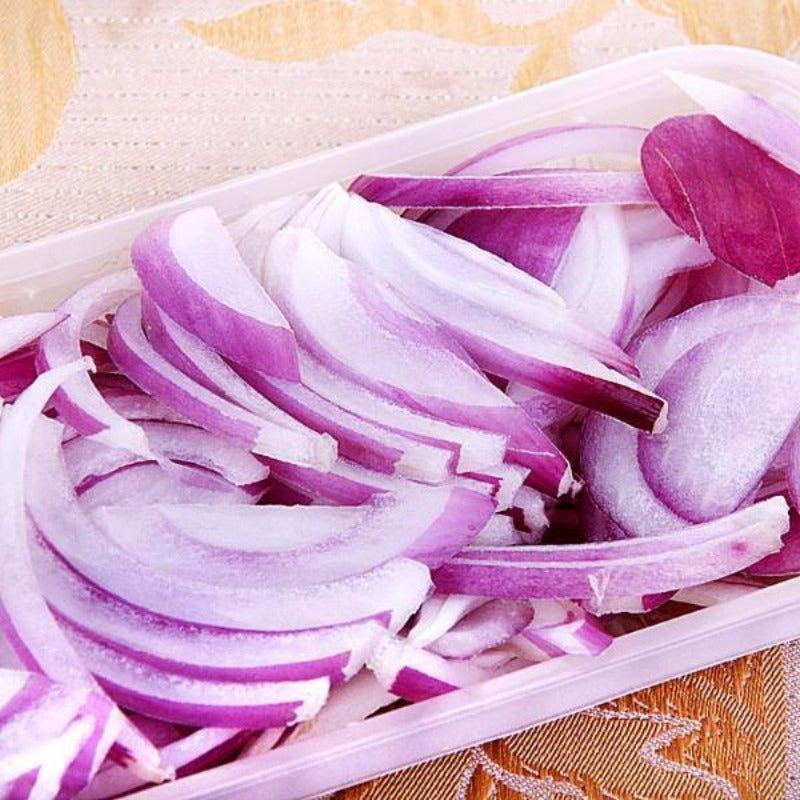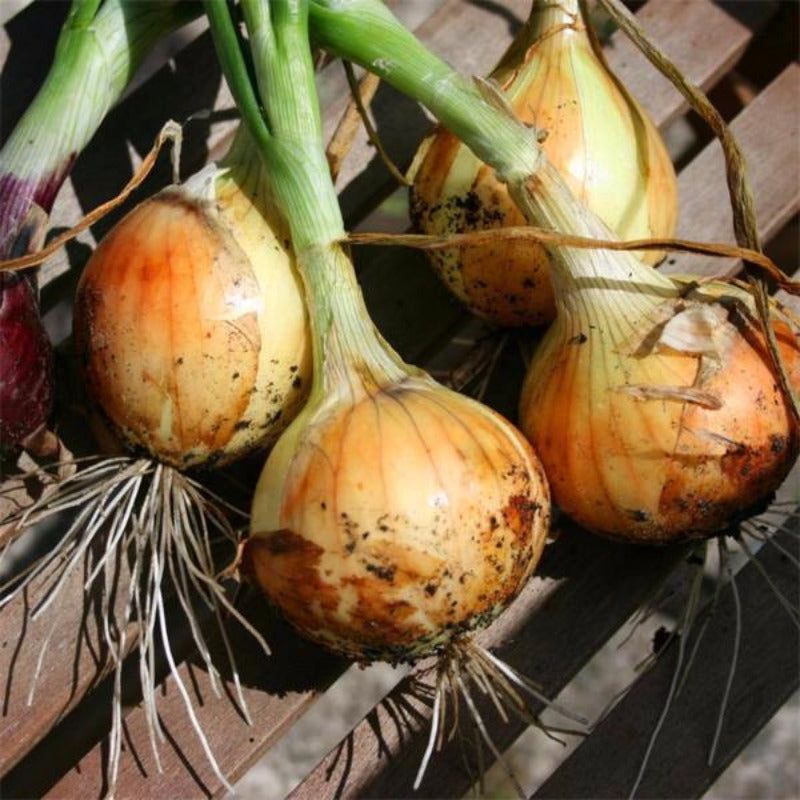- Species and varieties: Red onions (Allium cepa) are a variety of the common onion and are known for their mild, sweet flavor and vibrant red-purple skin. Popular varieties include 'Red Baron', 'Red Burgundy', and 'Red Creole'.
- Hybrid or heirloom: Red onion seeds can be found in both hybrid and heirloom varieties. Heirloom varieties, such as 'Red Wethersfield', are open-pollinated and have been passed down through generations, while hybrid varieties are bred for specific traits like disease resistance and uniformity.
- Pruning and training: Red onions do not require pruning or training. However, it is important to keep the area weed-free to reduce competition for nutrients and water. Mulching can help retain soil moisture and suppress weeds.
- Fertilization needs: Red onions benefit from a balanced fertilizer applied at planting time. A nitrogen-rich fertilizer can be used during the early growth stages to promote healthy foliage. As the bulbs begin to form, a fertilizer with higher phosphorus and potassium content is recommended. Avoid over-fertilizing with nitrogen during the bulbing stage, as it can lead to excessive leaf growth at the expense of bulb development.
- Hardiness zones: Red onions can be grown in USDA hardiness zones 3-9. They are quite adaptable and can be grown in a variety of climates.
- Climate requirements: Red onions prefer full sun and well-drained soil with a pH between 6.0 and 7.0. They require a moderate amount of water, especially during the bulbing stage. Red onions thrive in cooler weather and are typically planted in early spring or late summer, depending on the region.








